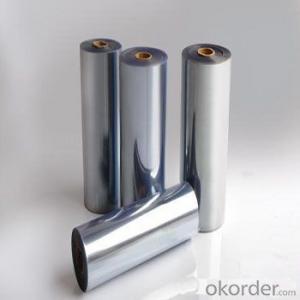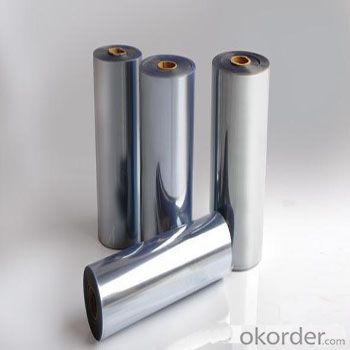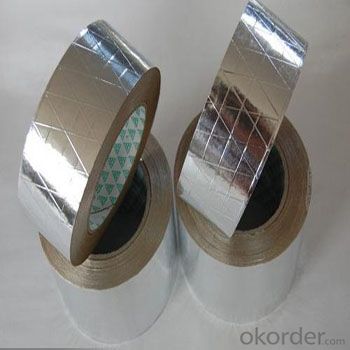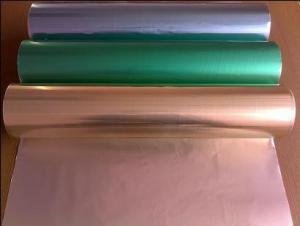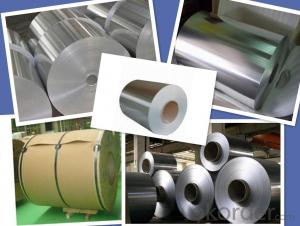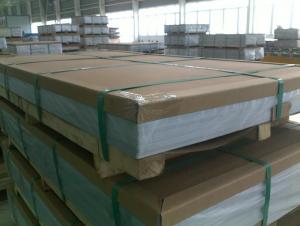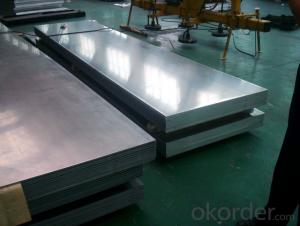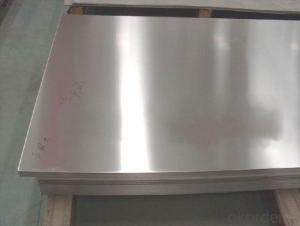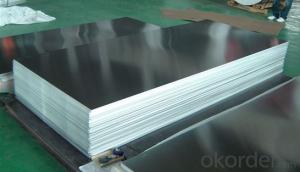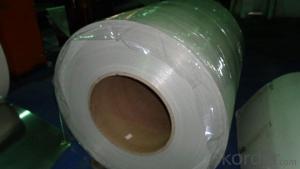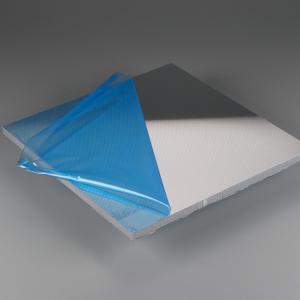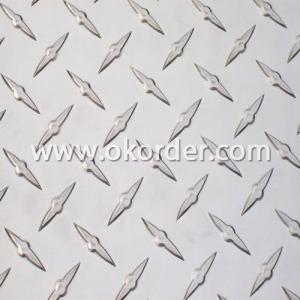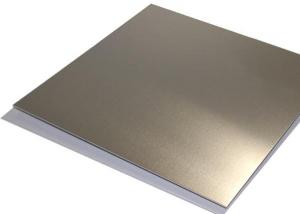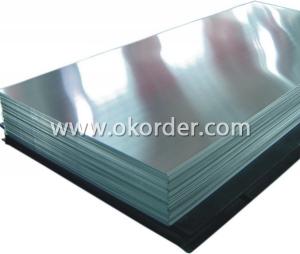Painted Aluminum Sheets Los Angeles - 5083 Aluminium Sheet, Aluminium Strip, Household Aluminium Foil
- Loading Port:
- Shanghai
- Payment Terms:
- TT OR LC
- Min Order Qty:
- 5 m.t.
- Supply Capability:
- 1000 m.t./month
OKorder Service Pledge
OKorder Financial Service
You Might Also Like
Specification
Our advantage
1.20 years OEM service, custom order available
2.Excellent barrier
3.FDA, SGS
Material: Different materials available for option - Food grade
Glossy finish: PET/AL/PE, PET/VMPET/PE, OPP/VMPET/PE
Transparent: PET/PE, NY/PE,PET/CPP
Matte finish: OPP/AL/PE,PET/CPP, PET/NY/PE
More Details
1. Original factory price, high quality, fast delivery.
2. ISO9001:2008; ISO14001:2004.
3. Material: PET/ AL/ PE; NY/AL/PE,OPP/CPP,PE/PET.etc.
4.Moisture proof, oxygen barrier, nontoxic.
5. Available in different material to suit for different products’ package
6.Customized structures, size, styles are welcome.
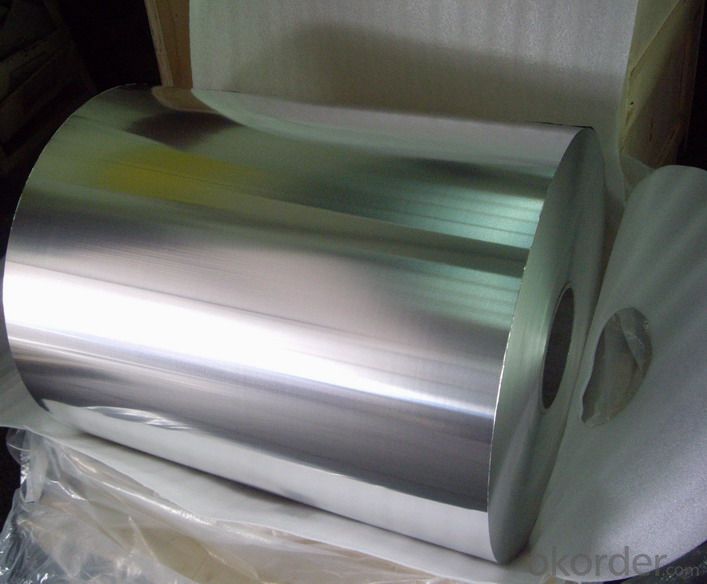
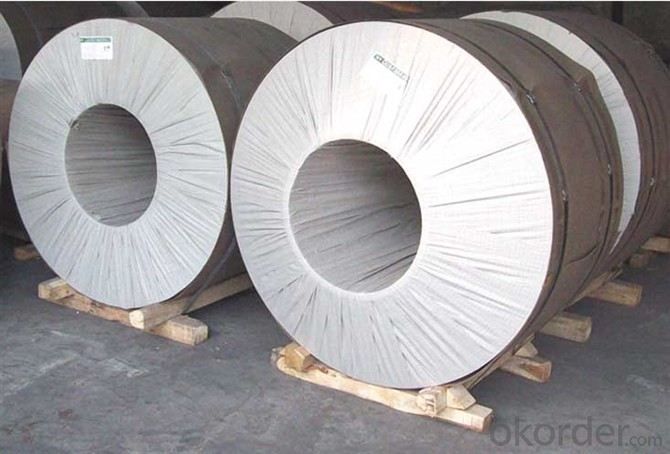
In North America, aluminium foil is known as aluminum foil. It was popularized by Reynolds Metals, the leading manufacturer in North America. In the United Kingdom and United States it is, informally, widely called tin foil, for historical reasons (similar to how aluminum cans are often still called "tin cans").Metallised films are sometimes mistaken for aluminium foil, but are actually polymer films coated with a thin layer of aluminium. In Australia, aluminium foil is widely called alfoil.
Aluminium (or aluminum; see spelling differences) is a chemical element in the boron group with symbol Al and atomic number 13. It is a silvery white, soft, nonmagnetic, ductile metal. Aluminium is the third most abundant element (after oxygen and silicon), and the most abundant metal in the Earth's crust. It makes up about 8% by weight of the Earth's solid surface.
Aluminium metal is so chemically reactive that native specimens are rare and limited to extreme reducing environments. Instead, it is found combined in over 270 different minerals.The chief ore of aluminium is bauxite.
FAQ
①How about your company?
A world class manufacturer & supplier of castings forging in carbon steel and alloy steel,is one of the large-scale professional investment casting production bases in China,consisting of both casting foundry forging and machining factory. Annually more than 8000 tons Precision casting and forging parts are exported to markets in Europe
,America and Japan. OEM casting and forging service available according to customer’s requirements.
②How to guarantee the quality of the products?
We have established the international advanced quality management system,every link from raw material to final product we have strict quality test;We resolutely put an end to unqualified products flowing into the market. At the same time, we will provide necessary follow-up service assurance.
③How long can we receive the product after purchase?
The purchase of product within three working days, We will arrange the factory delivery as soon as possible. The pecific time of receiving is related to the state and position of customers.Commonly 7 to 10 working days can be served.
- Q: Which is better, a water bottle made out of steel or one made out of aluminum?
- Water is heavy, why add more weight to it by using a steel bottle. You might also take along one of the filtration kits so you can refill the one bottle you are carrying.
- Q: What are the different forming methods for aluminum sheets?
- There are several different forming methods that can be used to shape aluminum sheets. These methods include: 1. Roll Forming: This process involves passing the aluminum sheets through a series of rollers that gradually shape the material into the desired form. Roll forming is often used to create long, continuous shapes such as channels or rails. 2. Press Forming: Press forming uses hydraulic or mechanical presses to apply force to the aluminum sheet, creating the desired shape. This method is commonly used for forming complex shapes with tight tolerances. 3. Stretch Forming: In stretch forming, the aluminum sheet is clamped at its edges and then stretched over a die, causing the material to conform to the shape of the die. This method is often used to produce curved or contoured parts. 4. Deep Drawing: Deep drawing involves placing a blank of aluminum sheet into a die and then using a punch to force the material into the die cavity, creating a hollow shape. This method is commonly used to produce cylindrical or box-shaped parts. 5. Hydroforming: Hydroforming uses hydraulic pressure to shape the aluminum sheet against a die. This method is particularly useful for producing complex, intricate shapes with smooth surfaces. 6. Incremental Sheet Forming: In incremental sheet forming, a CNC machine moves a small tool over the surface of the aluminum sheet, gradually shaping it by applying localized pressure. This method is often used for prototyping or small-scale production. These forming methods offer different advantages and are suitable for different applications. The choice of method depends on factors such as the desired shape, complexity, and volume of production.
- Q: Is it possible to incorporate windows made from recycled materials into a construction project?
- <p>Yes, you can use windows made from recycled materials in your project. There are eco-friendly windows available that are manufactured using recycled glass or other sustainable materials. These windows can offer similar performance to traditional ones while reducing the environmental impact of your construction. It's important to check the quality and certifications of the recycled windows to ensure they meet your project's requirements.</p>
- Q: What are the different types of alloys used for painted aluminum sheets?
- There are various types of alloys used for painted aluminum sheets, including the commonly used 3003 and 5052 alloys. These alloys offer excellent corrosion resistance and formability, making them suitable for a wide range of applications. Additionally, other alloys such as 6061 and 7075 are utilized for their high strength properties in more demanding or specialized applications.
- Q: Can aluminum sheets be laser engraved?
- Yes, aluminum sheets can be laser engraved. Laser engraving is a versatile and precise method of marking or engraving various materials, including metals like aluminum. The process involves using a high-powered laser beam to remove the top layer of the aluminum sheet, creating a permanent and precise engraving. Laser engraving on aluminum sheets is commonly used in industries such as signage, jewelry, and industrial manufacturing for applications such as branding, product identification, and decorative purposes. The level of detail and resolution achievable through laser engraving on aluminum sheets depends on the power and settings of the laser machine used.
- Q: Can aluminum sheets be used for balcony railings?
- Yes, aluminum sheets can be used for balcony railings. Aluminum is a lightweight and durable material that is commonly used for this purpose due to its resistance to rust and corrosion. Additionally, aluminum can be easily shaped and customized to meet specific design requirements, making it a popular choice for balcony railings.
- Q: hi my house is wired with aluminum wire and we have this light that has been changed 6 times because originally there was a cheap builders light up there that got replaced with a ceiling fan but the ceiling fan was replaced a couple of times since the remote never worked properly on any of the cieling fans so finally we replaced the cieling fan with just a normal light but now the socket got cracked on the new light by accident. The problem is im wondering if it is safe to put another light up because i have heard aluminum wire breaks easy and the wires have been moved around alot. But if i dont replace the light i wont have a light. We also use the correct wire nuts and anti oxidant on the connections. Also when the 4 cieling fans that had been put up were wired correctly since i have put up many cieling fans up without remotes before. Also Is there a certain number of times aluminum or copper wire can be bent with out having to worry about a fire happening or the wire breaking.
- OK. the first thing is that you can connect copper to aluminum. They make wire that is called copper clad aluminum and is exactly what it sounds like, but you don't have to install that. So if you want to install a junction box just make sure that it remains exposed and that you secure the wire within 12 inches of the box. About your light. I would simply put up another fixture, just make a visual inspection of the wire. if it is all roughly the same shade then it is most likely still fine. The only damage that is done by replacing a fixture to much is to the wire that is inside of the box and if something happens to that it will not start a fire, the light simply won't work.
- Q: What are the different surface finishes for aluminum sheets in the aerospace industry?
- Some of the different surface finishes for aluminum sheets in the aerospace industry include mill finish, anodized finish, brushed finish, and painted finish. These finishes are applied to enhance the appearance, durability, corrosion resistance, and overall performance of the aluminum sheets in aerospace applications.
- Q: Can aluminum sheets be used for pharmaceutical cleanrooms?
- Yes, aluminum sheets can be used for pharmaceutical cleanrooms. Aluminum is a popular choice for cleanroom construction due to its excellent durability, corrosion resistance, and ease of cleaning. It is also non-porous, which helps prevent the growth of bacteria and ensures a sterile environment. Additionally, aluminum sheets can be easily fabricated and installed, making them a suitable material for pharmaceutical cleanroom applications.
- Q: Can the aluminum sheets be used for reflector applications?
- Yes, aluminum sheets can be used for reflector applications. Aluminum is widely known for its high reflectivity, making it an ideal material for reflectors in various industries. It has a reflectivity of around 90% for visible light and up to 95% for infrared radiation. The smooth surface of aluminum sheets allows for efficient reflection of light and heat, making them suitable for applications such as automotive headlights, solar reflectors, lighting fixtures, and optical instruments. Additionally, aluminum is lightweight, corrosion-resistant, and has excellent thermal conductivity, further enhancing its suitability for reflector applications.
Send your message to us
Painted Aluminum Sheets Los Angeles - 5083 Aluminium Sheet, Aluminium Strip, Household Aluminium Foil
- Loading Port:
- Shanghai
- Payment Terms:
- TT OR LC
- Min Order Qty:
- 5 m.t.
- Supply Capability:
- 1000 m.t./month
OKorder Service Pledge
OKorder Financial Service
Similar products
Hot products
Hot Searches
Related keywords
